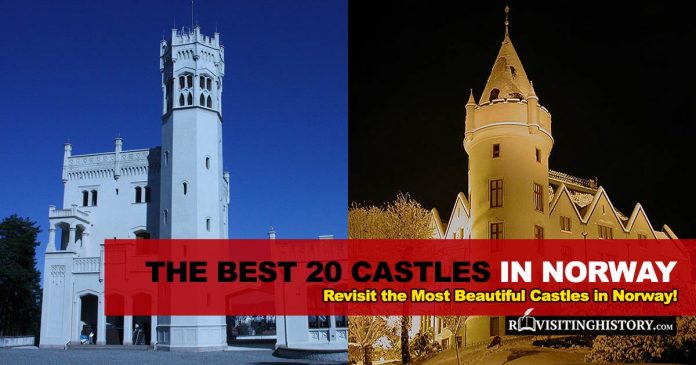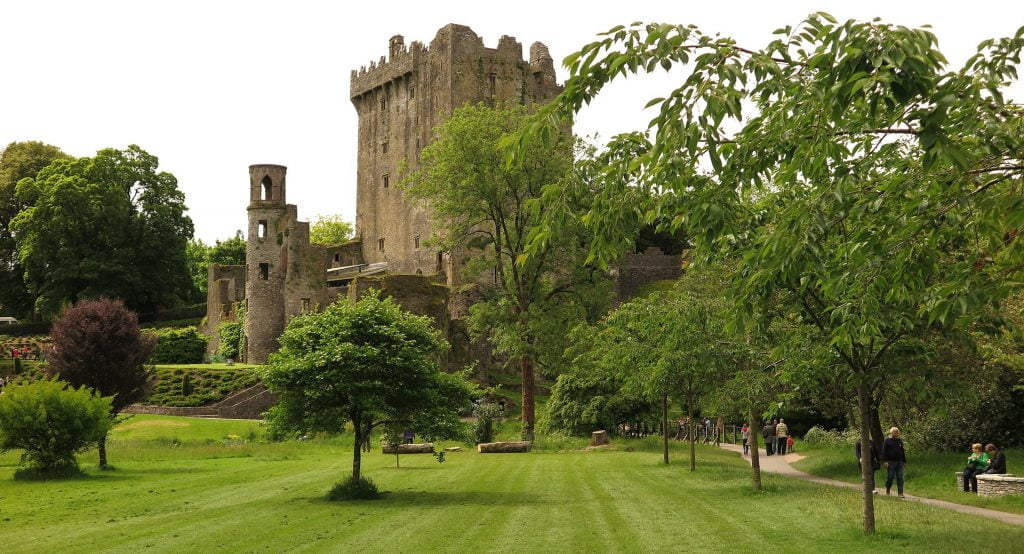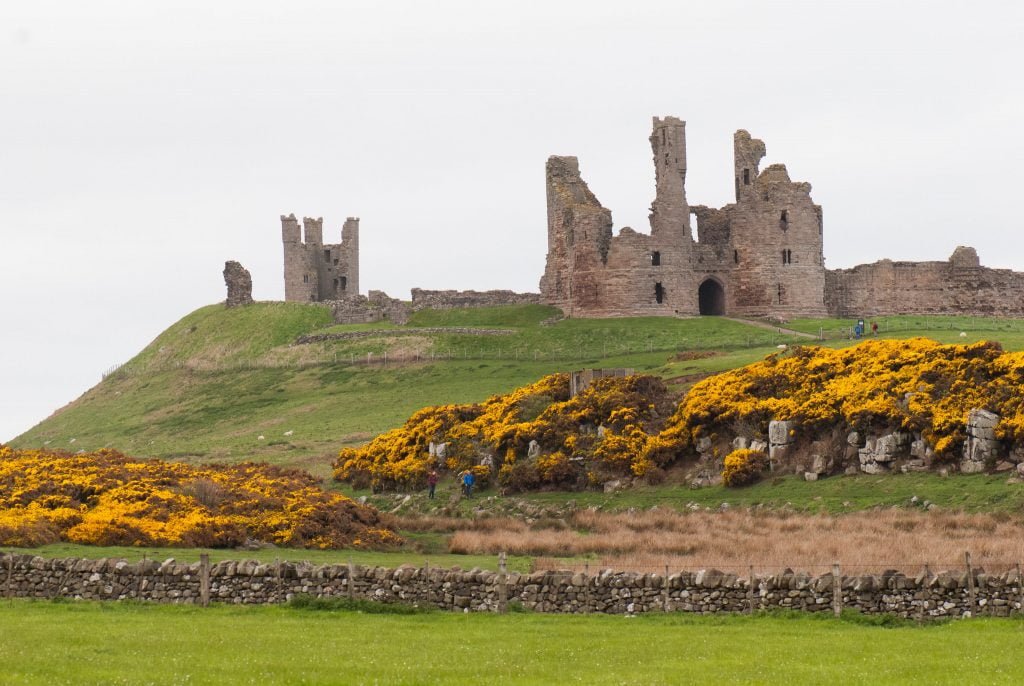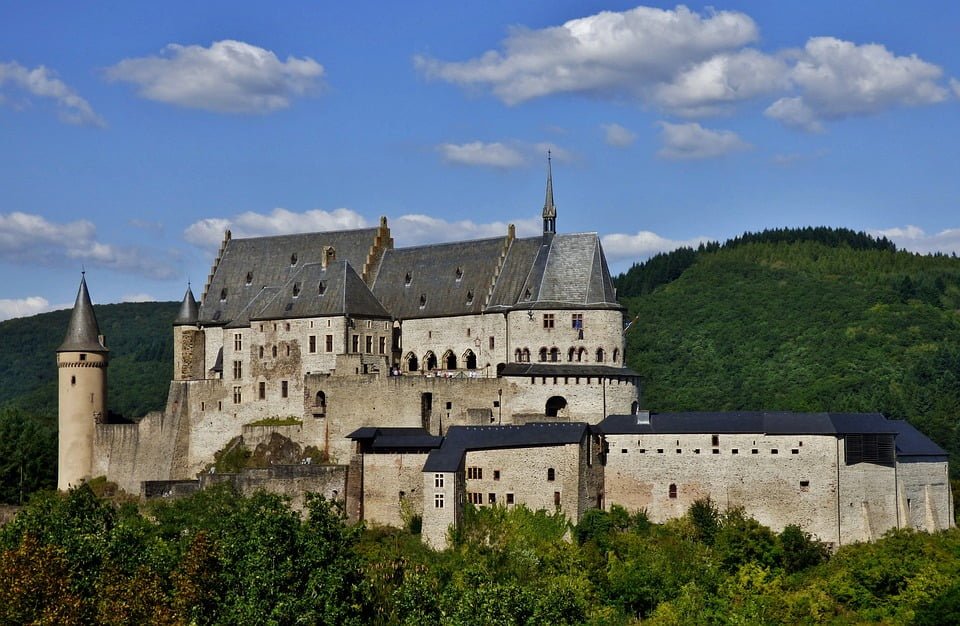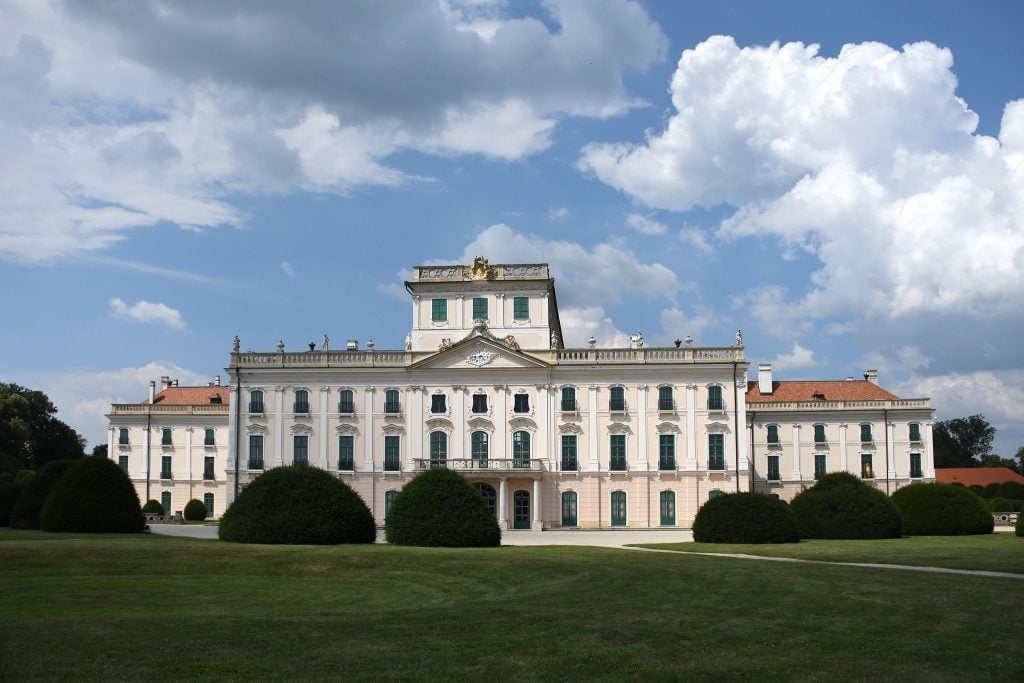With its captivating skies, stunning lakes, and breathtaking fjords, the Land of the Midnight Sun draws in nature lovers from around the world. But Norway’s allure doesn’t stop there. While most people associate this Arctic country with its ecological beauty and Viking heritage, Norway is also a go-to destination for architecture enthusiasts.
From its beautiful 13th century castles to the medieval fortresses that protected the royal families of the past, these extravagant palaces will leave you in awe. Here is a list of the 10 most famous castles in Norway not to be missed, plus 10 more for the true deep-dive experience!
Table of Contents
10 Most Popular Castles to Visit in Norway
The order of the list is based on Google search volume of each castle = popularity.
1. The Royal Palace of Oslo
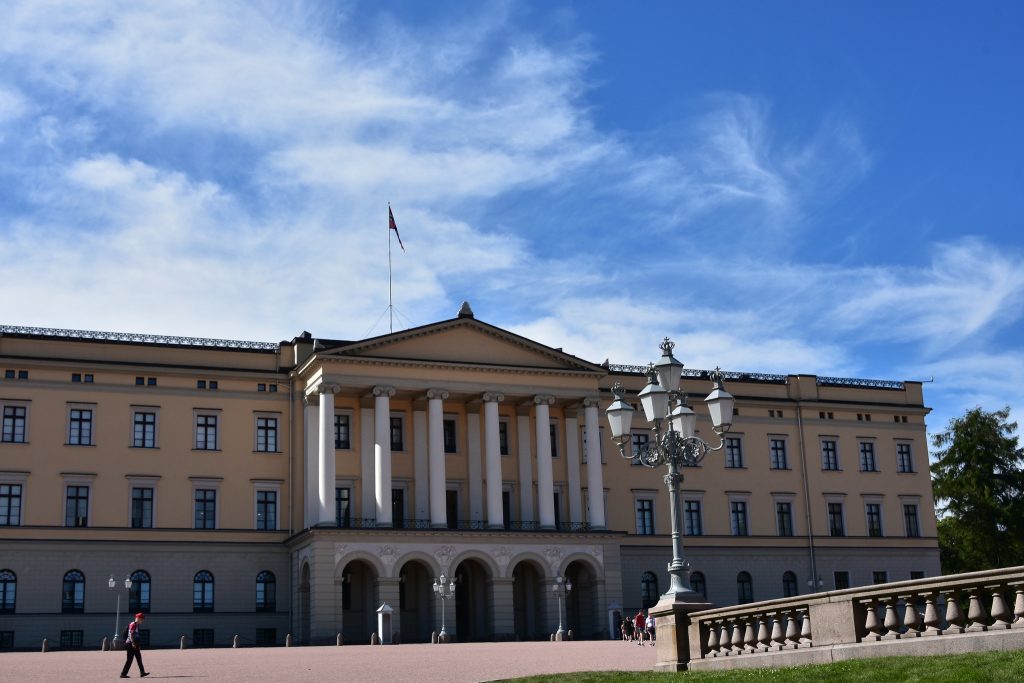
The construction of the Royal Palace of Oslo saw the end of one reigning monarch and the beginning of another. Although commissioned in 1825 by King Charles XIV, the palace was completed in 1849, after his son King Oscar I had taken the Norwegian throne.
The castle was designed by the Danish-born architect and officer, Hans Linstow, with finances taken out of the government bond. The foundations of the castle were quite costly and caused it to exceed the budget. Hence, construction was stopped in 1827 but resumed in 1833.
While the palace is still in use by the monarchy and in fact serves as the current Royal Family’s official residence, guided tours allow visitors to experience the majestic interiors of the Cabinet Parlor, Counsel Chamber, Ballroom, and the Bedroom Suite of King Haakon VIII.
- Location: Oslo
- Time built: 19th century
- Architectural style: Neoclassical
- Touring: Allowed. Visit the official website for more information.
2. Akershus Castle
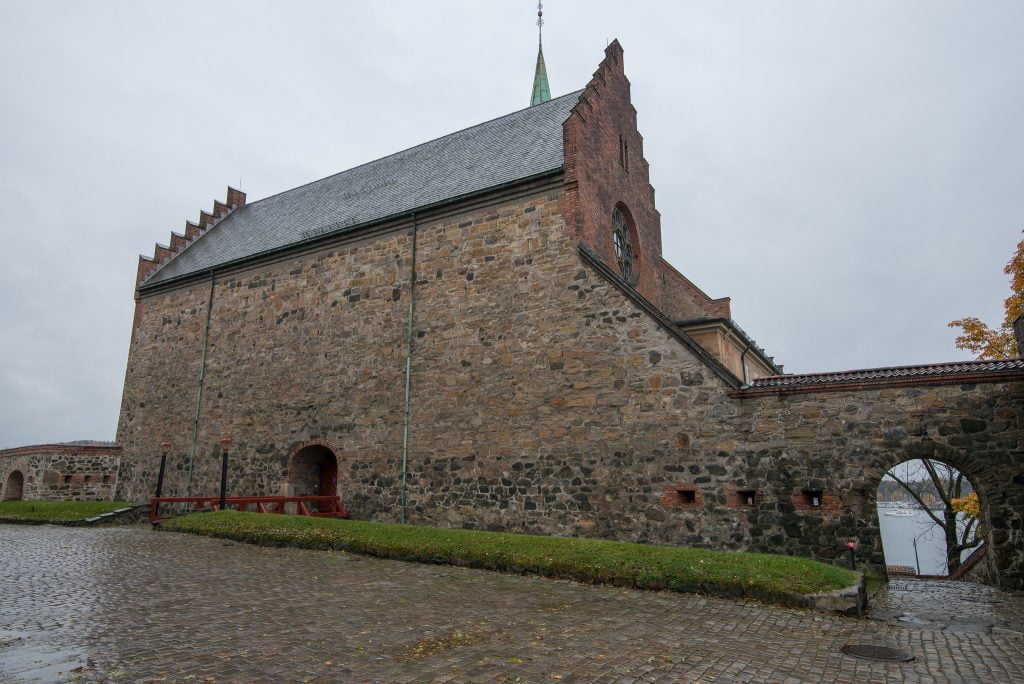
After its construction in 1299, the magnificent Akershus Castle was used as a residence for King Hakon V. Since then it has served multiple roles, as a prison, a military base, and even official office for the Norwegian Prime Minister. The castle was also besieged multiple times: once in the Middle Ages by a Swedish Duke, and again in the 15th century by the Swedish King.
The great fire of 1624 destroyed much of the original structure, a complete renovation began soon after. The residential wing was added in 1637 at the request of King Christian IV and thus reflects a distinctly Renaissance style, including features like Italian bastions. The castle was surrendered to the Nazis in 1940 (during World War II); a number of executions took place here under the German occupiers.
Today visitors can roam the grounds and enjoy the rich heritage of the castle.
- Location: Oslo
- Time built: 13th century
- Architectural style: Renaissance
- Touring: Allowed. Visit the official website for more information.
3. Bergenhus Fortress
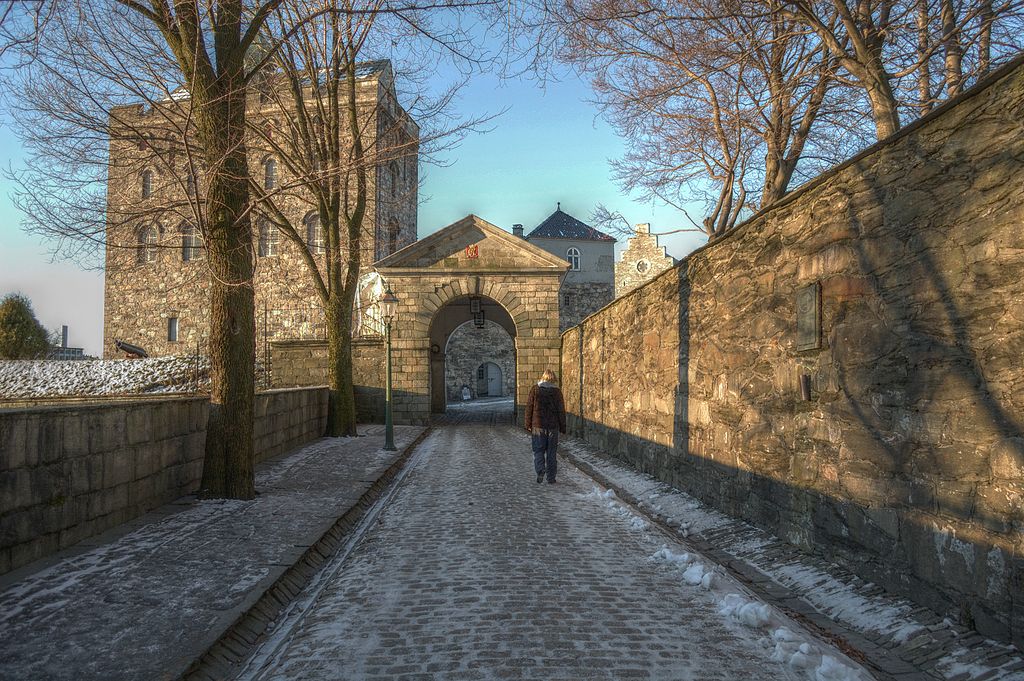
Bergenhus Fortress has a long and royal past. The original structure dates back to the 13th century, from an age when Bergen served as the country’s capital and Holmen, the seat of the monarchy. In the 15th century, the pirateering Victual Brothers captured and set fire to the ancient stone walls. Major restorations nearly a century later rebuilt Haakon’s Hall and Rosenkrantz Tower.
Over the centuries, these stone walls have served as a shrine of Saint Sunniva, burial grounds for six Norwegian kings, a military base for Danish conquerors, regional headquarters for the Nazi German navy, and a symbol for the 19th century Norwegian Romantic Nationalism movement. Today, the medieval halls are decorated in ancient tapestries and frescos from Håkon Håkonsson’s saga. Tourists get to visit an exhibition showcasing the rich history of the Bergenhus Fortress.
- Location: Holmen, Bergen
- Time built: 13th century
- Architectural style: Medieval
- Touring: Allowed. Visit the official website for more information.
4. Oscarshall
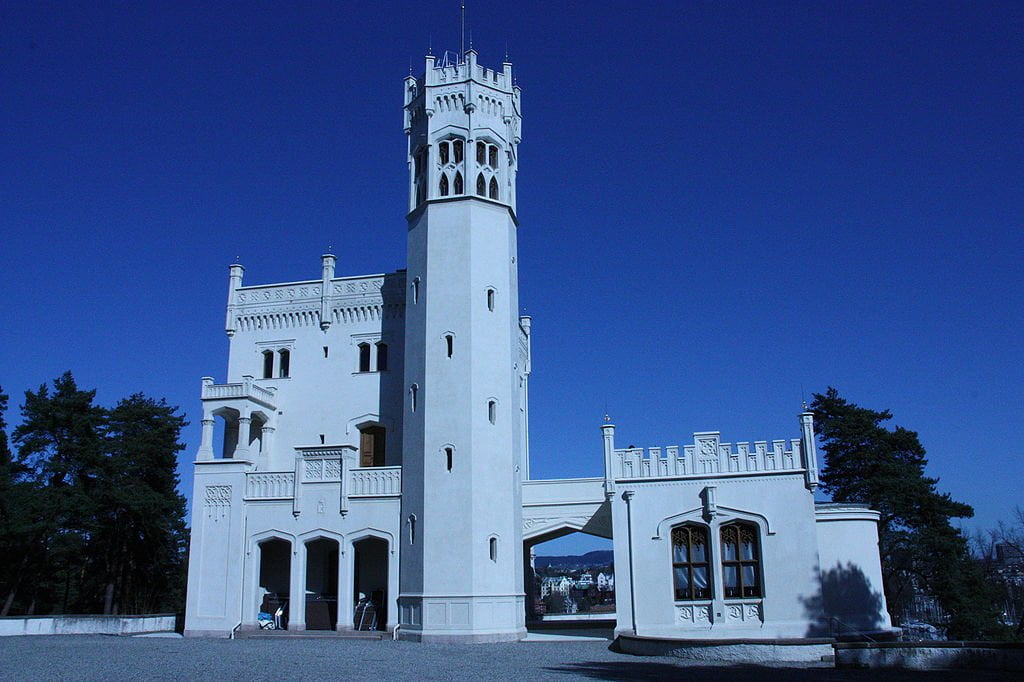
Placed along the fjord Frognerkilen, Oscarshall was constructed in 1852 as a summer home for King Oscar I and Queen Josephine. Their son King Oscar II turned the palace into a museum during his reign, although future generations of monarchs continued to use it as a residence.
Recently, the palace underwent a complete restoration and, as of 2009, is once again open to the public. Widely considered the epitome of Gothic Revival architecture, Ocarshall is the collabortorial result of Norwegian designers, decorators, artists, and artisans.
This shines through in the interior that is reminiscent of a traditional guildhall, making Oscarshall an icon of the Norwegian Romantic style. Visitors can take a guided tour to explore the palace and admire the royal art collection, which includes painted works by Joachim Frich and Adolph Tidemand.
- Location: Oslo
- Time built: 19th century
- Architectural style: Gothic Revival
- Touring: Allowed. Visit the official website for more information.
5. Steinvikholm Castle
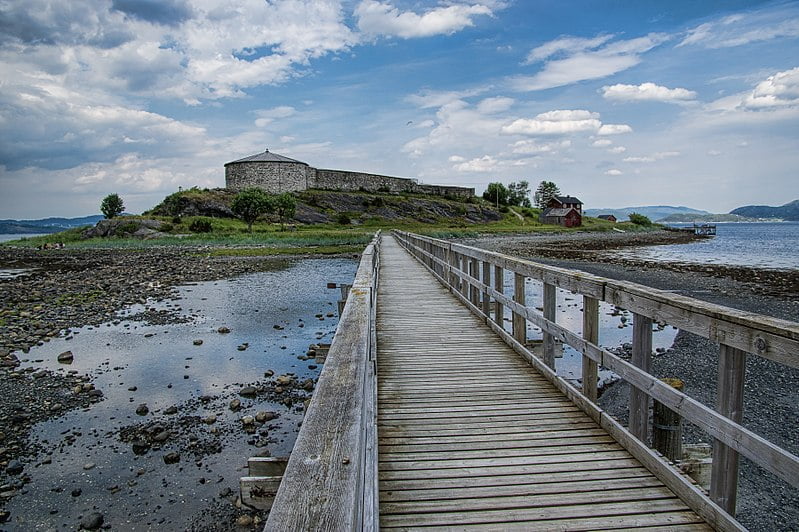
This island-bound castle boasts a history of glory and was first constructed in 1525 by the last Archbishop (Olav Engelbrektsson) of Norway. With a wooden bridge as the access point, the medieval-style fortification of this castle spreads across about half the island. The castle fortifications were eventually rendered outdated by the changing styles of war.
Today, Steinvikholm Castle is a pretty tourist attraction. You can avail yourself of several activities here. The kiosk is definitely a must-visit and the beach makes for a nice place to take a romantic stroll. Other than that, one can also go on a fishing excursion on the jetty. Both towers of the castle can also be booked for events.
- Location: Skatval peninsula
- Time built: 16th century
- Architectural style: Medieval
- Touring: Allowed. Visit the official website for more information.
Revisit More Historic Places Below or Read Further
6. Barony Rosendal
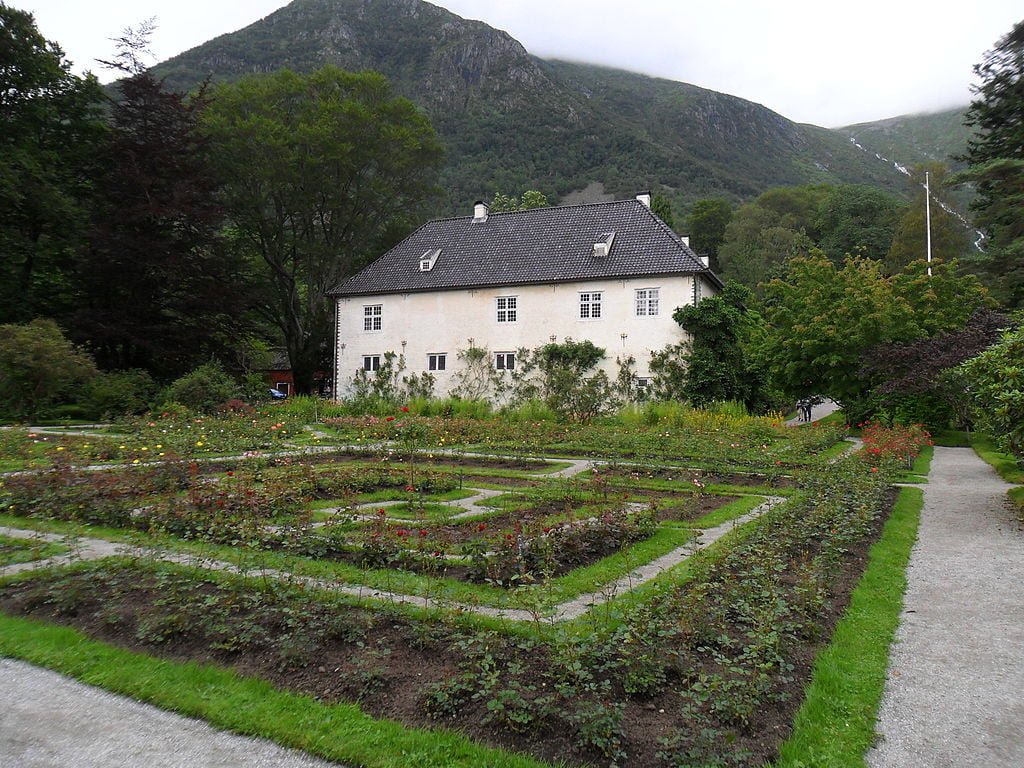
This impressive estate is a dream come true for history buffs of all kinds. In 1638, Danish politician Ludvig Rosenkrantz married Norwegian heiress Karen Mowat. The original estate was a wedding present from the bride’s father, the richest landowner in the country. Over the course of its existence, this manor house has played an important role in the cultural lives of Norway. There even used to be concerts held in there back in the day, and the tradition continues on to this day.
The couple were huge patrons of the arts, hosting guests like authors Henrik Ibsen and Alexander Kielland, artists like Hans Gude and Anders Askevold, and musicians like Edvard Grieg and Ole Bull. Today, their meticulously preserved vast collection is open to the public, from the 17th-century library to the 20th-century tapestries.
- Location: Kvinnherad, Hordaland
- Time built: 17th century
- Architectural style: Renaissance
- Touring: Allowed. Visit the official website for more information.
7. Fredriksten Fortress
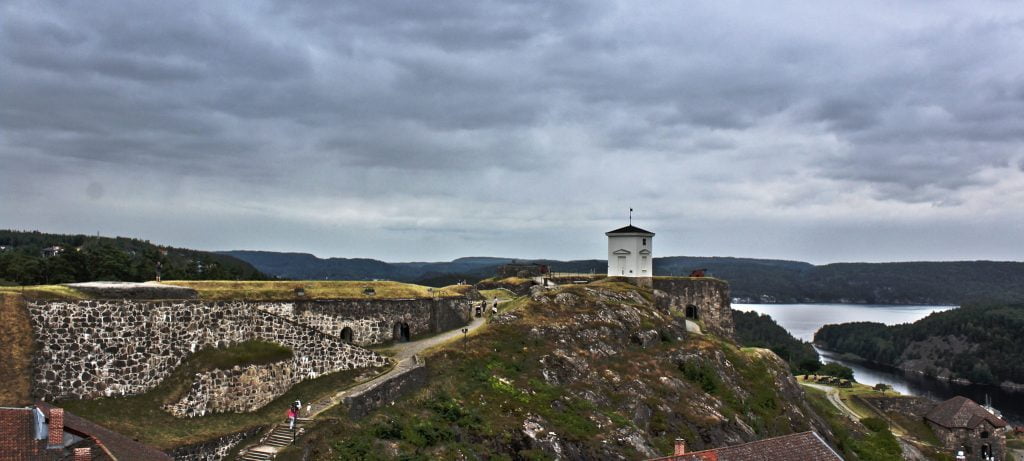
This heritage site of today served as an essential military installation in the past. With its spectacular natural views overlooking the town and fjord, Frediskstan Fortress is a relaxing destination for modern tourists. But long before it was used to host cultural events, it guarded the border between Norway and Sweden.
In fact, the structure that we see today was originally constructed in the 17th century as a replacement for the lost border fortress of Bohus. The story goes like this: in 1658 Norway lost its primary border security when Sweden took over the area of Bohuslan, including Bohus Fortress. Only three years later, construction began on Fredriksten Fortress with walls spread across 20,000 square meters (about 5 acres), giving the Norwegian army a much-needed stronghold. This fortress was initially named after Fredrick III of Denmark and Norway.
- Location: Halden
- Time built: 17th century
- Architectural style: Fortification
- Touring: Allowed. Visit the official website for more information
8. Gamlehaugen
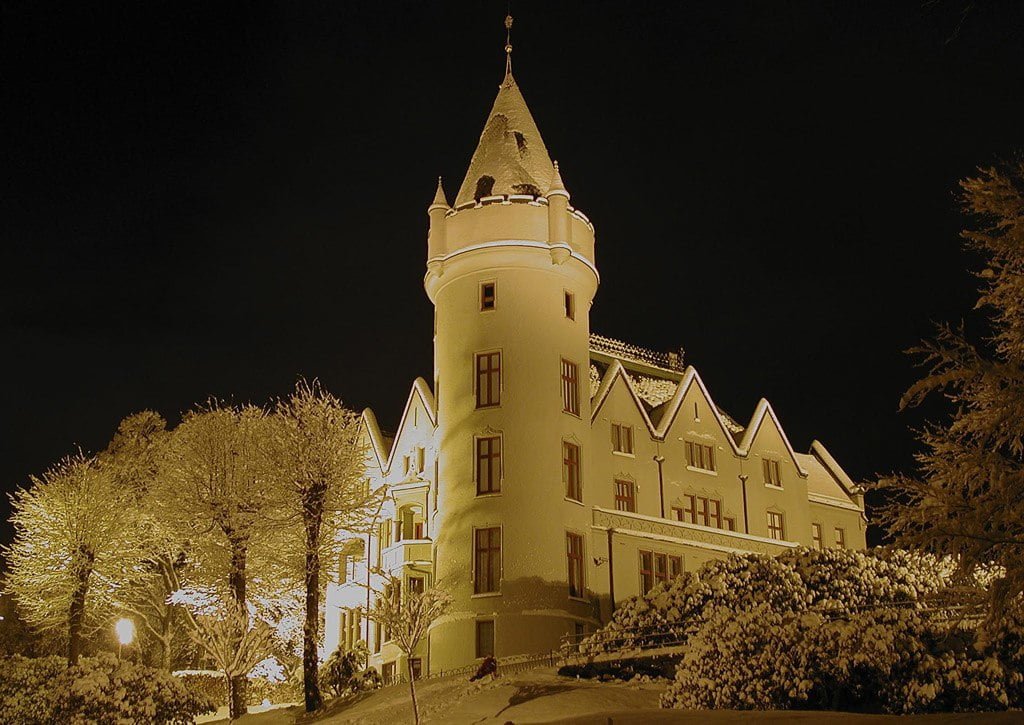
This stunning white manor will remind tourists of a cross between a lavish French castle and an imposing Scottish fortress, all the while exuding a distinctly Norwegian air. It is the most popular tourist destination in Norway, in great part because it still serves as one of the residences for the Norwegian Royal Family. It’s important to note that the history of this castle dates back to the Middle Ages, when the site of the castle used to be a farm that was abandoned during the black plague.
The current structure was commissioned by shipping magnate turned Prime Minister, Christian Michelsen in 1898. Designed by architect Jens Monrad Kielland, the manor is decorated in the Rococo, Neo-Classical and Baroque styles, making the interior incredibly lavish. Visitors can take a tour of the late premier’s library, offices, and music room during the summer months.
- Location: Paradis, Bergen
- Time built: 20th century
- Architectural style: Scotish Baronial
- Touring: Allowed. Visit the official website for more information.
9. Kristiansten Festning
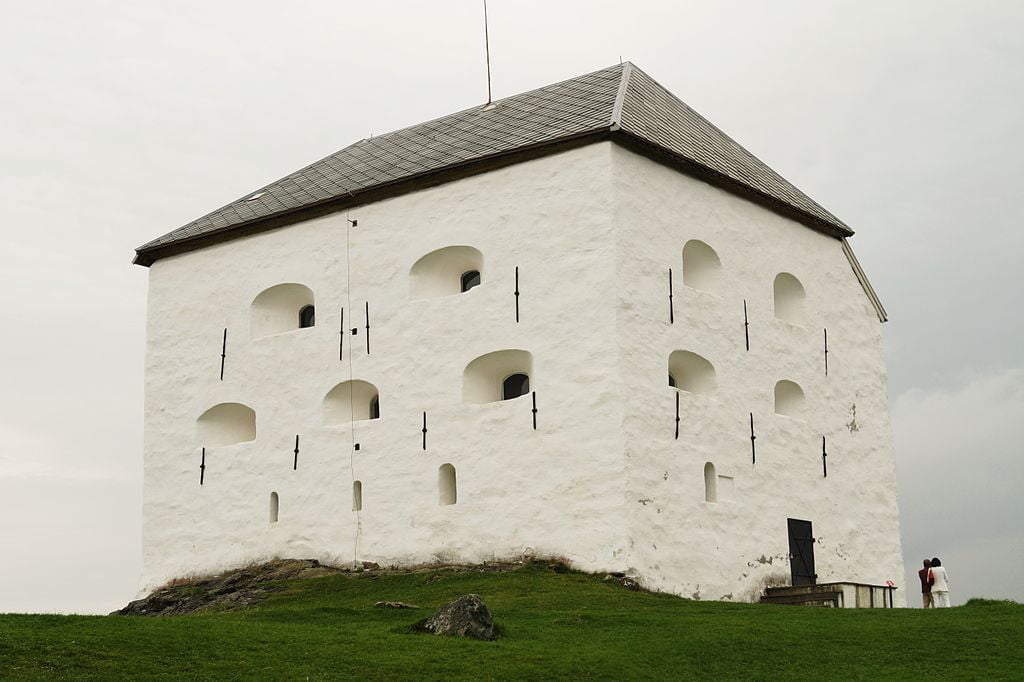
Visitors enroute to Trondheim will notice this crisp white fortress standing out against the blue sky. Kristiansten Festning was commissioned soon after the great fire in 1681 to serve as a protector for the city.
Today, guests who climb its steps feel empowered by the sense of safety and tranquility as they gaze down upon the fjord to mountains in the distance. It has gained the privilege of being the city’s most important landmark. But this peace is quickly disrupted as the guided tour and museum visit educate tourists on the gruesome past of the fort, particularly during the Second World War–when 23 Norwegian patriots were murdered by the Nazis inside the castle. The castle gates are open all year round; there’s a cafe next to the fortress where one can enjoy cool drinks and a meal after the tour.
- Location: Trondheim
- Time built: 17th century
- Architectural style: Baroque
- Touring: Allowed. Visit the official website for more information.
10. Ledaal
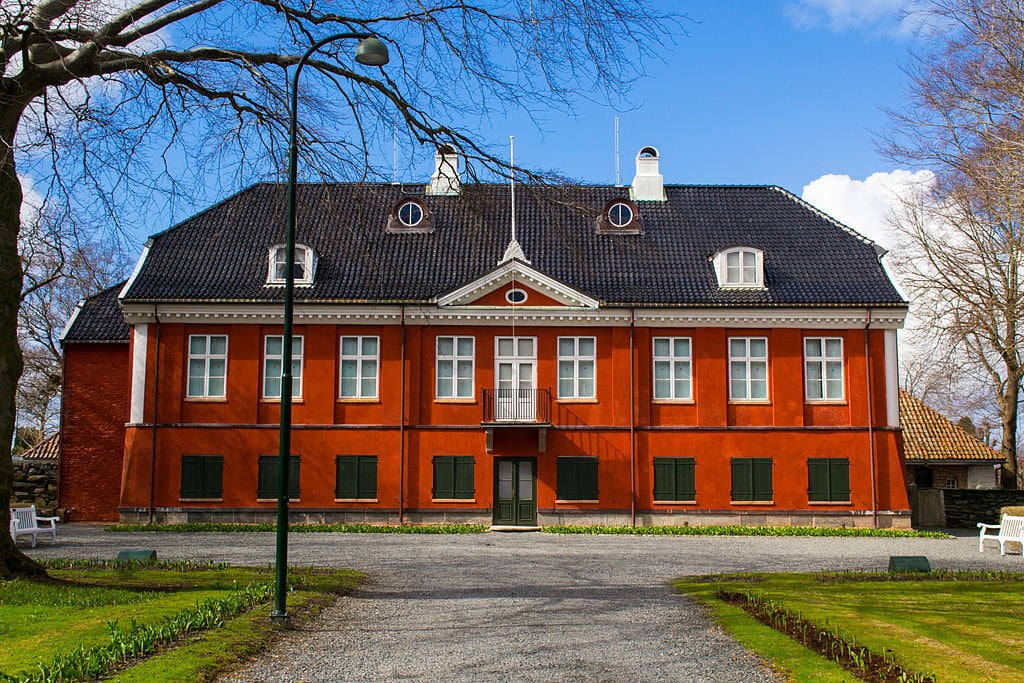
The exhilarating and colorful exterior of Ledaal Manor will fill visitors with instantaneous joy. While the structure was originally built in 1799 as the Kielland family’s summer home, it later became one of the residences of the King of Norway, in 1949. Fun fact: the estate gained its name from the two last letters of the owner and his wife’s names.
Fans of the writer Alexander Kielland will notice similarities between Ledaal House and the manor from the famed author’s books. They will be pleased to know that his great grandfather was the architect and designer behind the house’s inception, hence the influence.
In the first half of the 20th century, Ledaal was bought by the Stravanger Museum. However, it also doubles as a royal residence as well as a tourist attraction today.
- Location: Stavanger
- Time built: 18th century
- Architectural style: Rococco
- Touring: Allowed. Visit the official website for more information.
Planning to Visit Nearby Countries? Check Out These Best Castles Lists:
10 Less Popular Castles Worth Visiting While In Norway
Following are some more amazing castles located in Norway. They might not be as popular, but they do deserve honorable mentions:
11. Stiftsgarden
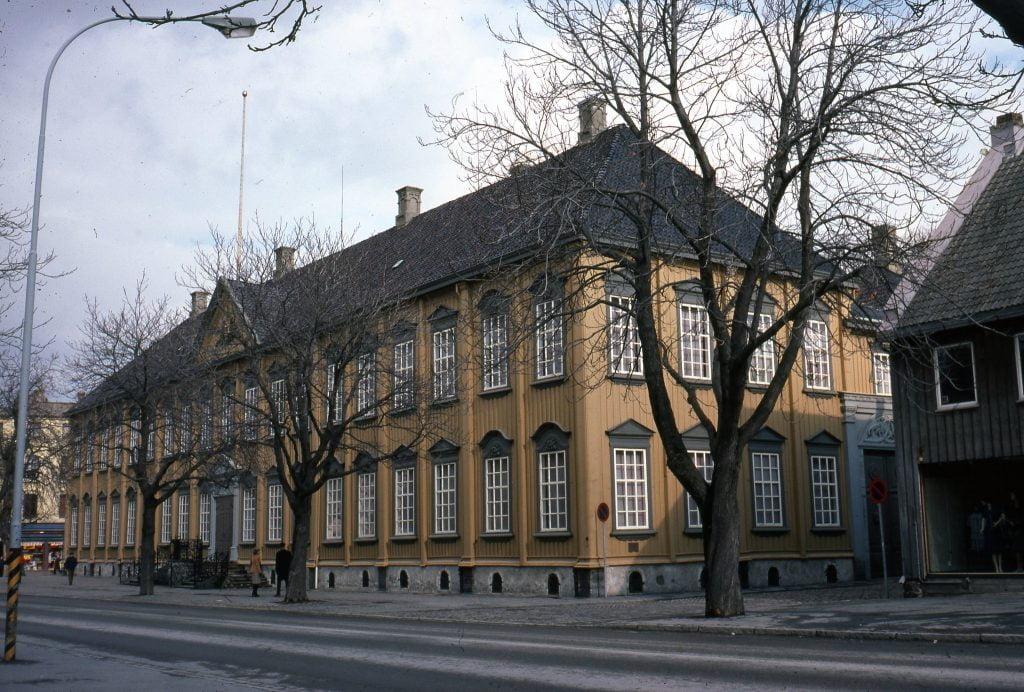
Also known as the Royal Residence of Norway, Stiftsgården is one of the largest wooden buildings in all of Europe. The exterior of Stiftsgarden showcases a transition from the gentle rococo mannerism to neoclassical. Inside, one can still behold the coronation decor carried out in the 19th century.
Note that it’s only open to the public during the summer season, so if you want a glimpse of the old-school royal life, then don’t forget to plan a visit.
- Location: Munkegaten
- Time built: 18th century
- Architectural style: Norwegian, Baroque, Rococo, & Neo-classical
- Touring: Allowed. Visit the official website for more information.
12. Vardehus Fortress
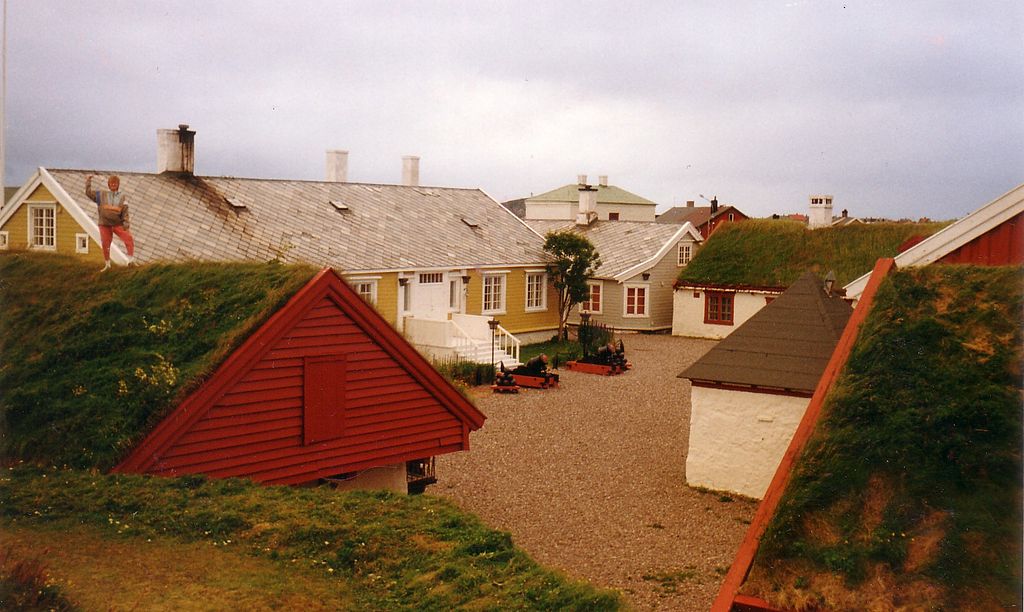
Vardo is located in Finmark on the border between Norway and Russia. In the 13th century, the island of Vardoya served as an important point for trade and as a fishery. The current Vardehus Fortress was constructed in the 1740s.
In the Second World War, Vardehus Fortress served as a prison for German POWs. During the Nazi invasion, the fortress was the last Norwegian unit to surrender. Post-war, it gained notoriety as a holding facility for citizens accused of treason during the Norwegian legal purge. All in all, this is a must-visit site for world war enthusiasts.
- Location: Vardo, Finmark
- Time built: 18th century
- Architectural style: Fortification
- Touring: Allowed. Visit the official website for more information.
13. Tonsberg Tower
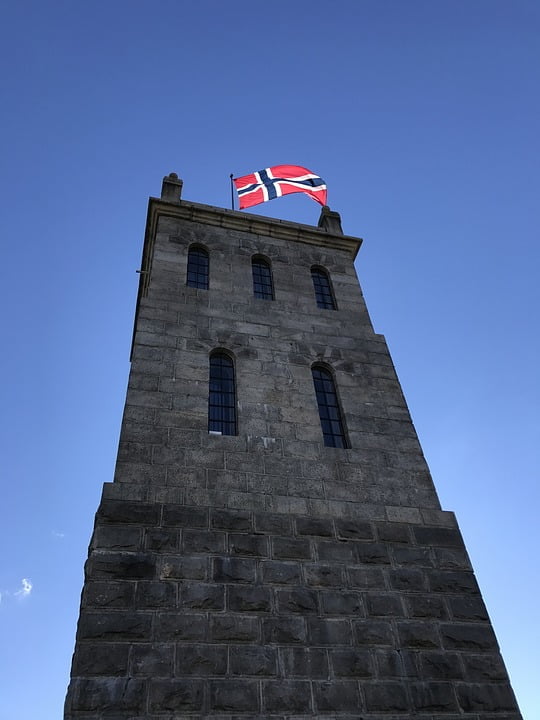
Tønsberg Fortress is said to be one of the oldest fortifications in the region, constructed even before the Battle of Hafrsfjord (after which Norway was brought under the rule of Harold I). In the past, this castle was known for its important location as a trading center, but today it is a nice tourist destination.
Although in ruins today, this castle has been re-erected as a memorial on which you can even see the signatures of the previous kings on one side. You can experience some great exhibits at the nearby museum too.
- Location: Tønsberg
- Time built: 13th century
- Architectural style: Medieval
- Touring: Allowed. Visit the official website for more information.
14. Austratt Fortress
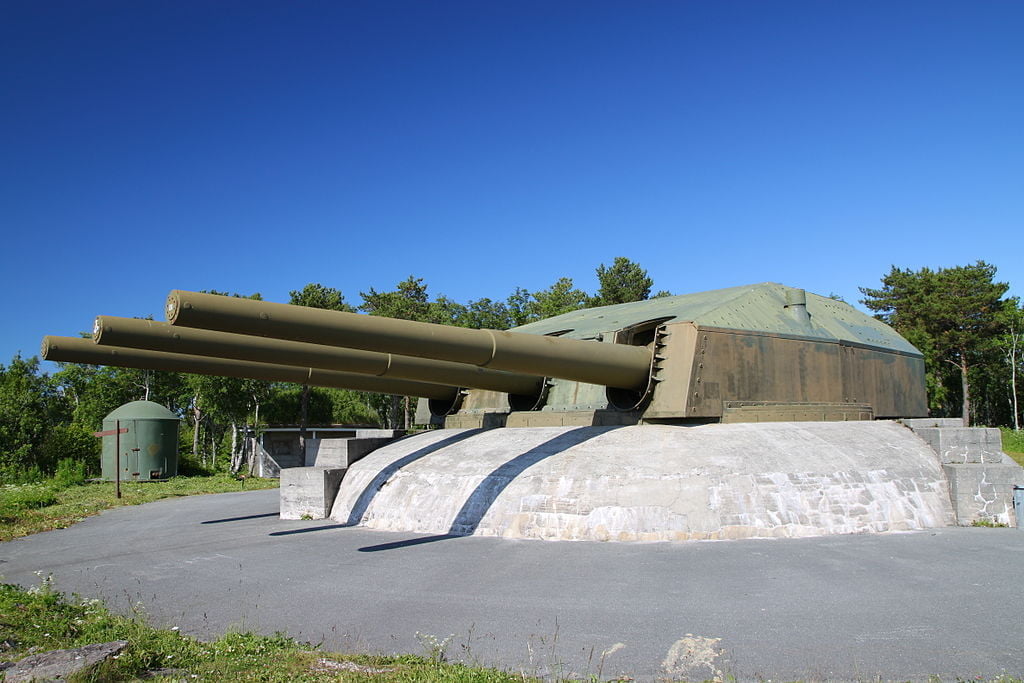
This coastal artillery is no ancient beast, it’s actually a World War II fortification that consists of a five-story cannon tower. The fort was decommissioned in 1968. Once occupied by the German forces, the facility is now an attractive tourist destination – especially for WWII history buffs. There are comprehensive war history collections inside where you can get guided tours by experts. This fortification is certainly very different from any old castle that you’ve visited before.
- Location: Ørland
- Time built: 19th century
- Architectural style: Military Artillary
- Touring: Allowed. Visit the official website for more information.
15. Sverresborg Castle Ruins
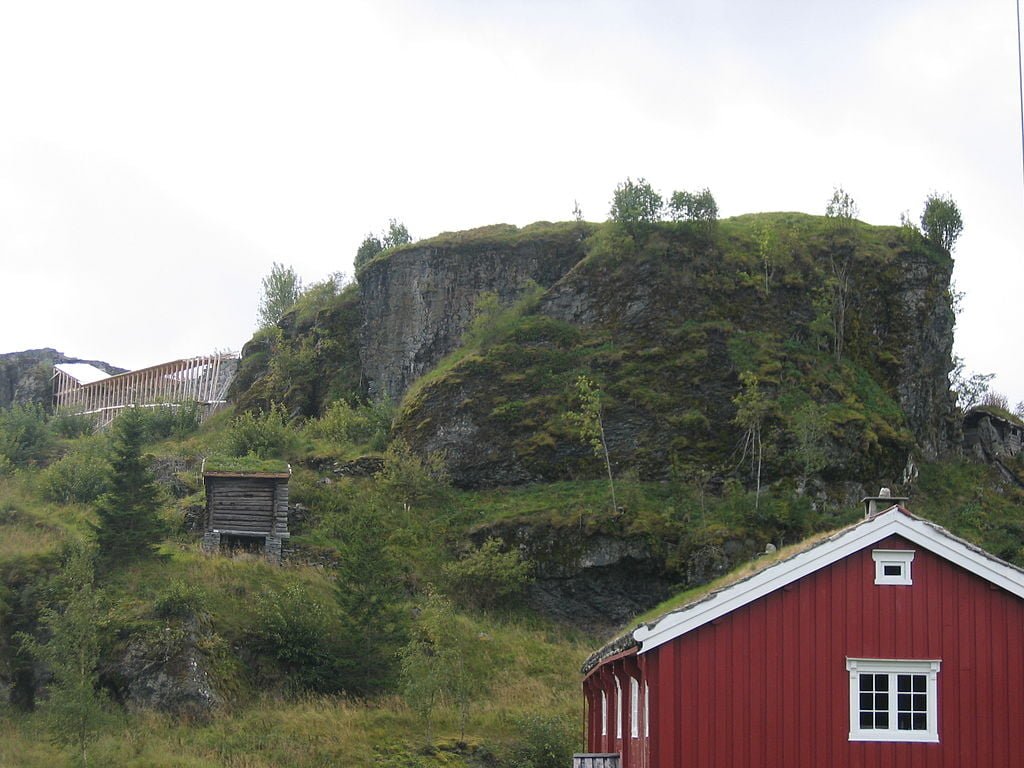
Not to be confused with its eponymous sister in Bergen, the ruins of this fort actually date back to the 12th century. It was commissioned by the king Sverre Sigurdsson and is considered one of the earlier Norwegian fortifications to have been built.
These days, the ruins of Sverresborg Castle have become an important heritage for Norway. There’s an open air museum that’s been operated at the castle since the early 20th century, it is considered one of the biggest cultural history museums in the world.
- Location: Trondheim
- Time built: 12th century
- Architectural style: Viking Castle’s
- Touring:Allowed. Visit the official website for more information.
Revisit More Historic Places Below or Read Further
16. Kristians and Kanon Museum
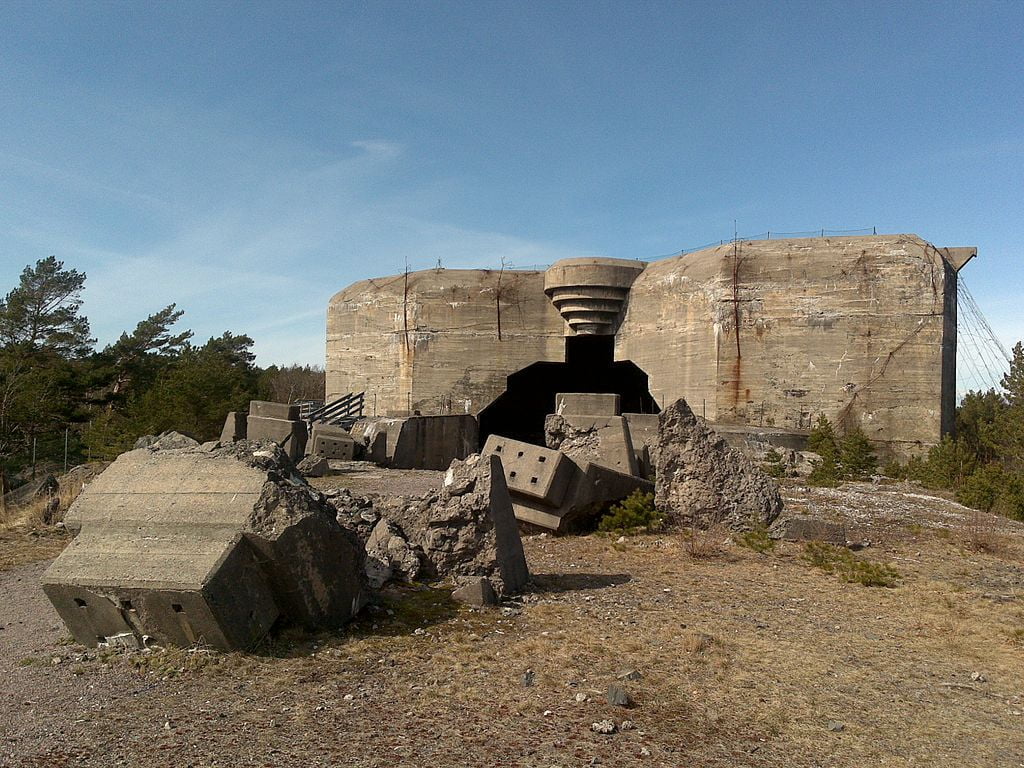
This is another World War II relic that served as a coastal artillery for the German navy. The barrier strategy and the plans of the fortress were supervised by Adolf Hitler himself before the groundwork was laid. It was used a few years after the war before finally being closed down in 1959.
The fort was then converted into a museum. Extensive renovation works were carried out in the 80s before a part of it was open to the public in 1993. This fortress is one of the largest ones of its kind remaining today.
- Location: Møvik
- Time built: 20th century
- Architectural style: Coastal Artillery
- Touring: Allowed. Visit the official website for more information.
17. Oscarsborg Fortress
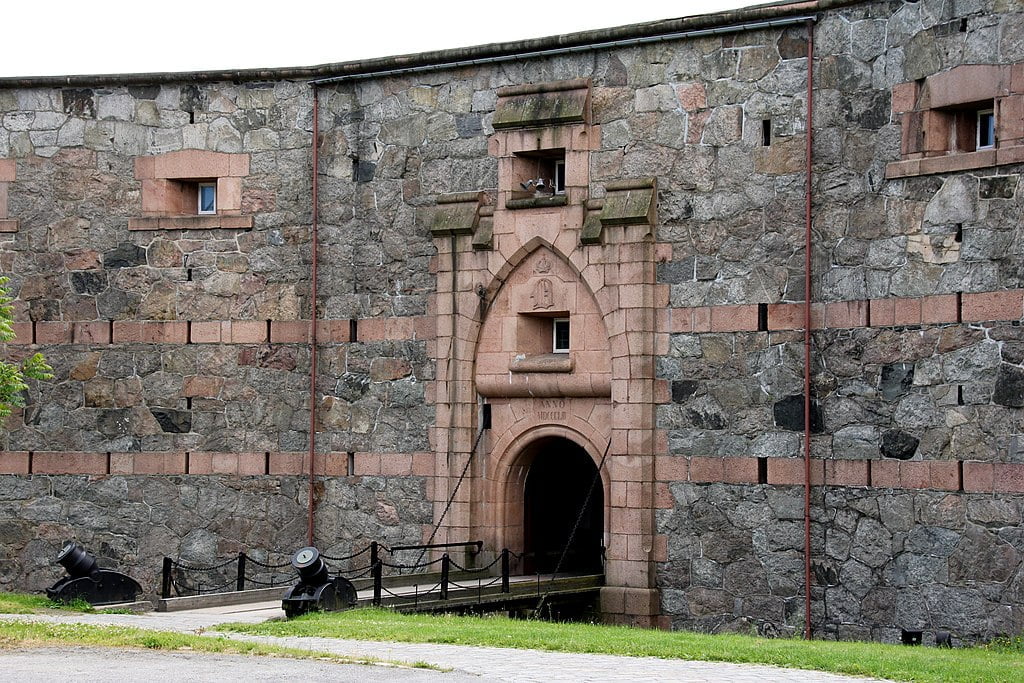
The location of this fortress is certainly one of the most unique that you’ll ever encounter. It is situated on two islets and is renowned for sinking the admiral class German heavy cruiser known as Blücher. The actual architecture of this fortress dates back to the 16th century.
It was upgraded in the 20th century for participation in WWII, where a brand new torpedo battery was added to the main construction. Today, it’s a tourist destination and has even been a shooting location for the movie The King’s Choice.
- Location: Oslofjord
- Time built: 16th century
- Architectural style: Coastal Artillery
- Touring: Allowed. Visit the official website for more information.
18. Kongsvinger Fortress
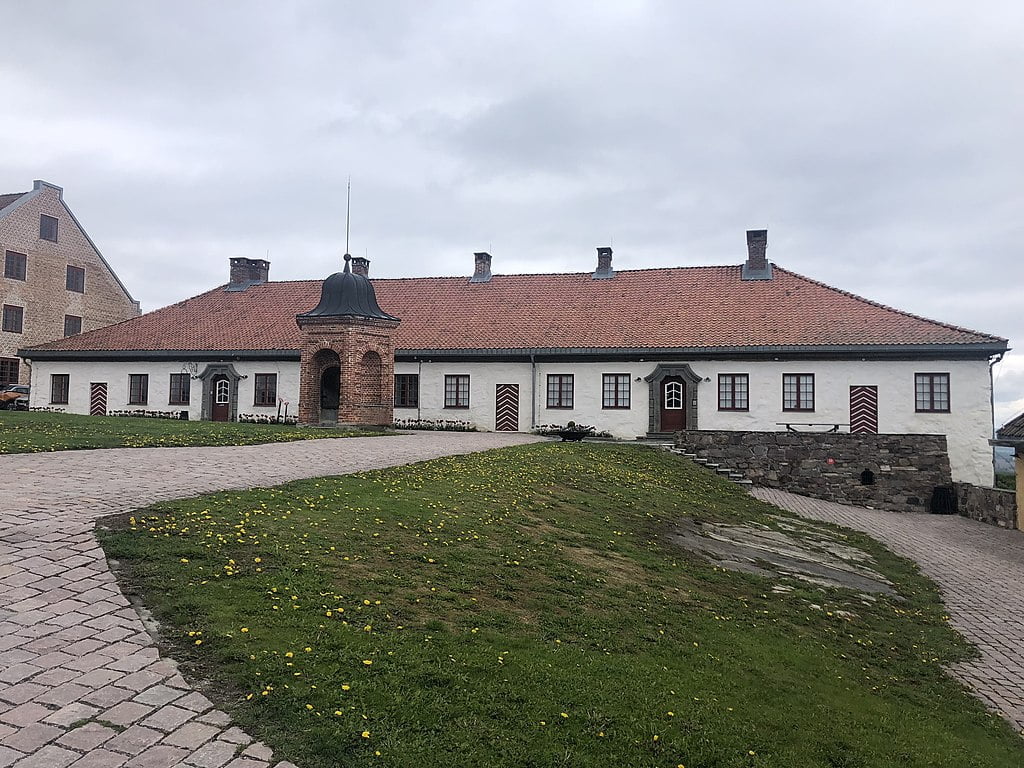
Kongsvinger Fortress first gained importance thanks to the religious importance of its location. It used to be a crossroad for pilgrims on their way to the shrine of St. Olaf. Later, the military made use of it, but the buildings standing today were erected in the 17th century.
Today, you can experience the castle in the form of a restaurant, a museum, and even a hotel. With gorgeous panoramic views of River Glomma, it’s an amazing destination to immerse in the history and culture of the Norwegian area.
- Location: Kongsvinger
- Time built: 1681
- Architectural style: Continental style
- Touring: Allowed. Visit the official website for more information.
19. Royal Residence, Bergen
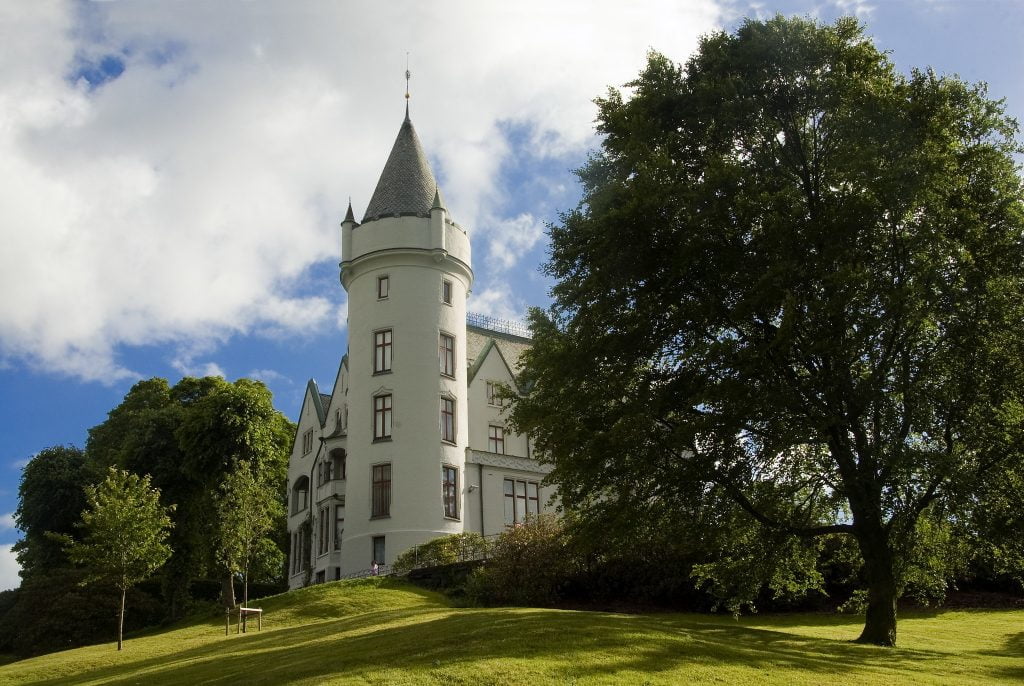
Also known as the Gamlehaugen, this Norwegian royal residence has a rich history that dates all the way back to the MiddleAages. However, it wasn’t till the 19th century that the mansion that we see today was constructed.
Emulating the Scottish Baronial aesthetic, the building was purchased by the state in the 20th century, was renovated in the latter half of the century, and became the royal residence. The estate farmlands were also converted into gorgeously landscaped gardens that are a joy to experience today.
- Location: Bergen
- Time built: 19th century
- Architectural style: Scottish Baronial
- Touring: Allowed. Visit the official website for more information.
20. Trondenes Fort
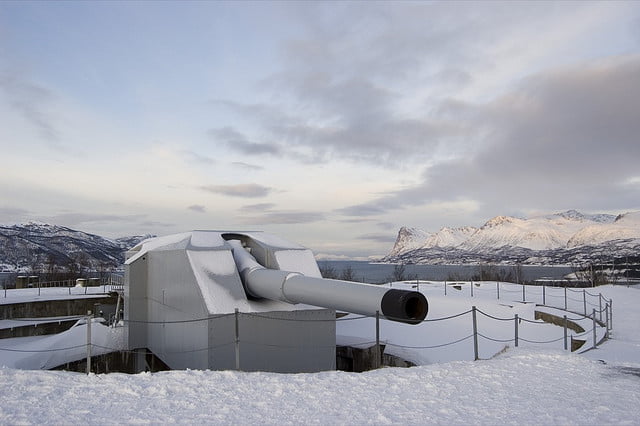
This fortress was a Nazi stronghold during World War II. It was equipped with four of the largest land-based guns in the world. Three of them are out of commission, but one is still kept in working order to this day. An extensive visit opens the window to the advanced German artillery that was used back in the day, which is absolutely fascinating.
This fortress has been used as the base of the Norwegian Marine Corps since 2002. It has been amazingly preserved in all its unique and formidable glory.
- Location: Harstad
- Time built: 1943
- Architectural style: Coastal Artillery
- Touring: Allowed. Visit the official website for more information.
Planning to Explore Europe? Check Out These Best Castles Lists:
Conclusion
Norway is home to some of the world’s oldest and most magnificent castles. The country’s rich heritage will let you walk through some of the best and worst times in history. You can get up close with the monarchy and see how the Royal Families of the past lived their lives. If you’re a lover of fine art and architecture then this is a trip you will never forget.

